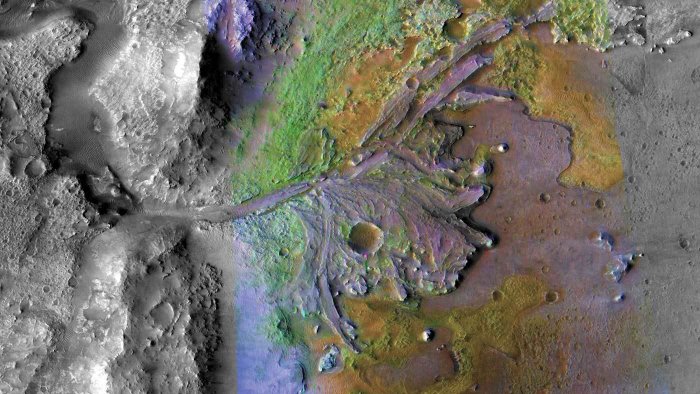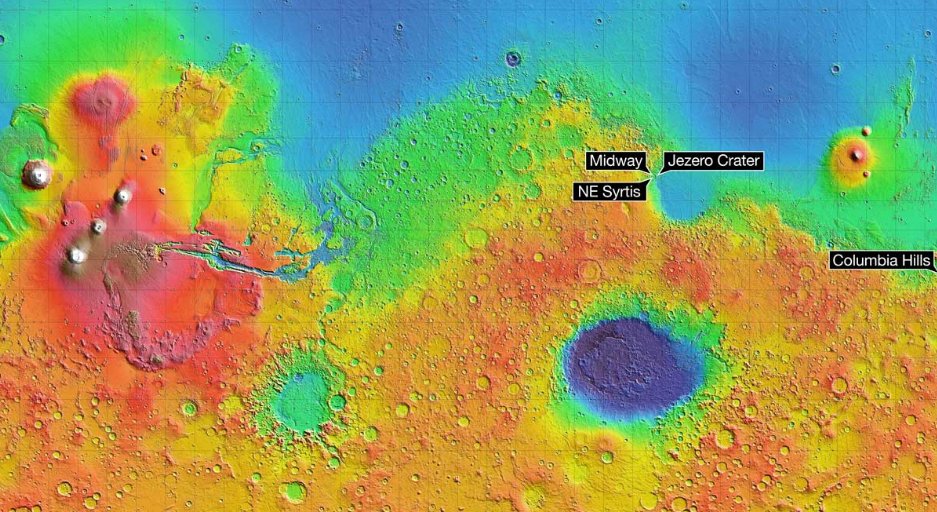MessageToEagle.com – NASA has chosen Jezero Crater as the landing site for its upcoming Mars 2020 rover mission.
The rover mission will not only seek signs of ancient habitable conditions – and past microbial life – but it also will collect rock and soil samples and store them in a cache on the planet’s surface.
NASA and ESA (European Space Agency) are studying future mission concepts to retrieve the samples and return them to Earth, so this landing site sets the stage for the next decade of Mars exploration.

“The landing site in Jezero Crater offers geologically rich terrain, with landforms reaching as far back as 3.6 billion years old, that could potentially answer important questions in planetary evolution and astrobiology,” Thomas Zurbuchen, associate administrator for NASA’s Science Mission Directorate, said in a press release.
“Getting samples from this unique area will revolutionize how we think about Mars and its ability to harbor life.”
Jezero Crater is located on the western edge of Isidis Planitia, a giant impact basin just north of the Martian equator. Western Isidis presents some of the oldest and most scientifically interesting landscapes Mars has to offer.
The 28-mile-wide (45-kilometer-wide) crater, once home to an ancient river delta, could have collected and preserved ancient organic molecules and other potential signs of microbial life from the water and sediments that flowed into the crater billions of years ago.

Jezero Crater’s ancient lake-delta system offers many promising sampling targets of at least five kinds of rock, including clays, carbonates and may contain a wide variety of minerals from inside and outside the crater.
When the landing site search began, mission engineers already had refined the landing system such that they were able to reduce the Mars 2020 landing zone to an area 50 percent smaller than that for the landing of NASA’s Curiosity rover at Gale Crater in 2012. This allowed the science community to consider more challenging landing sites. The sites of greatest scientific interest led NASA to add a new capability called Terrain Relative Navigation (TRN). TRN will enable the “sky crane” descent stage, the rocket-powered system that carries the rover down to the surface, to avoid hazardous areas.
The site selection is dependent upon extensive analyses and verification testing of the TRN capability. A final report will be presented to an independent review board and NASA Headquarters in the fall of 2019.
“Nothing has been more difficult in robotic planetary exploration than landing on Mars,” said Zurbuchen. “The Mars 2020 engineering team has done a tremendous amount of work to prepare us for this decision. The team will continue its work to truly understand the TRN system and the risks involved, and we will review the findings independently to reassure we have maximized our chances for success.”
MessageToEagle.com






